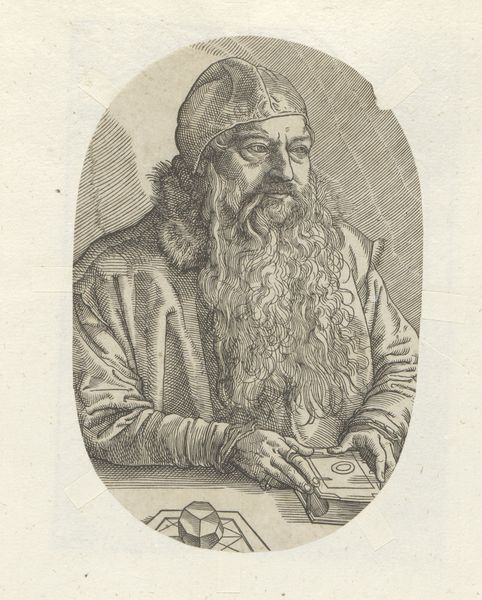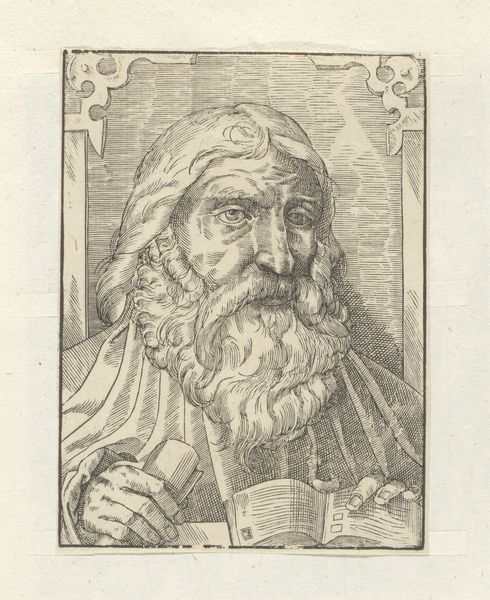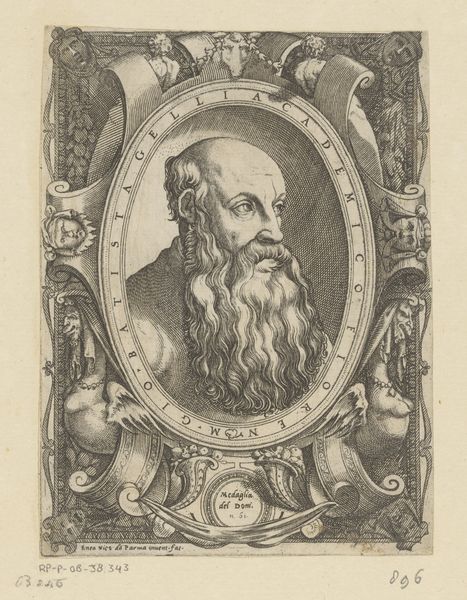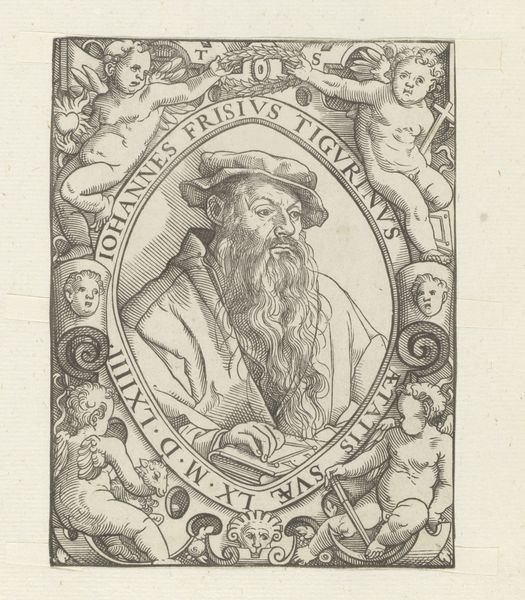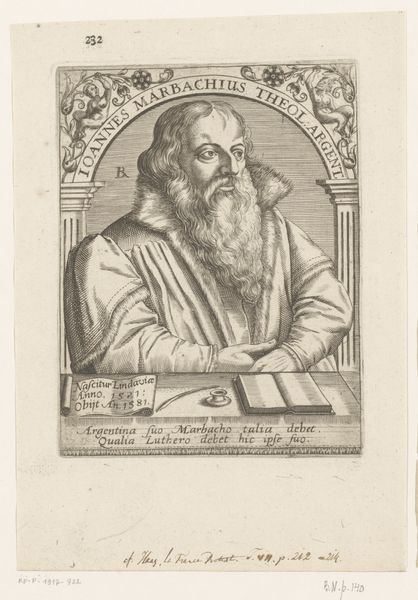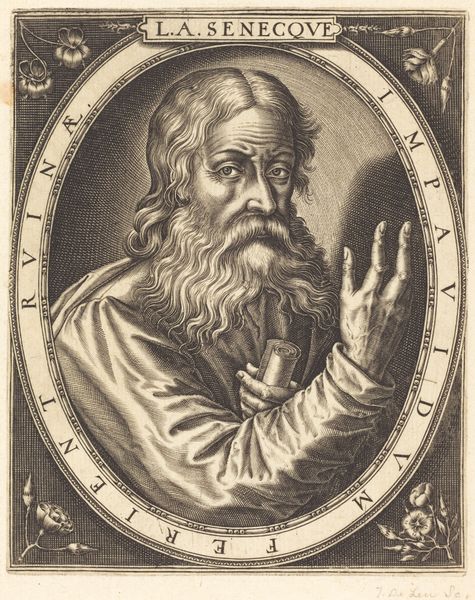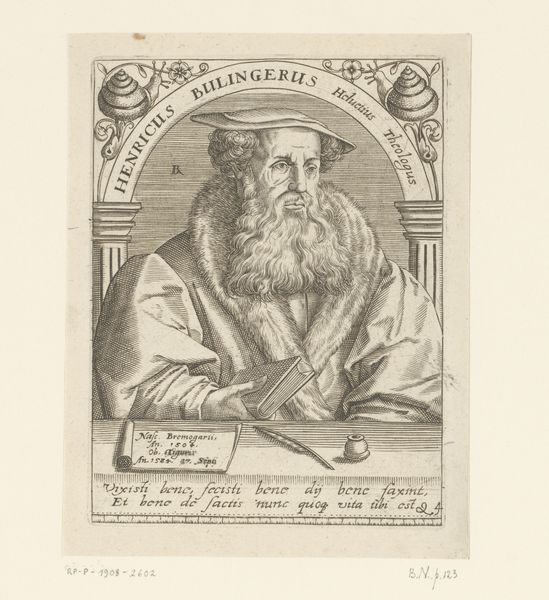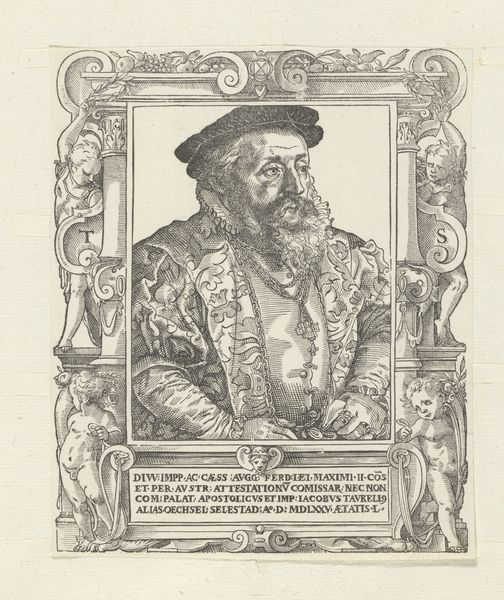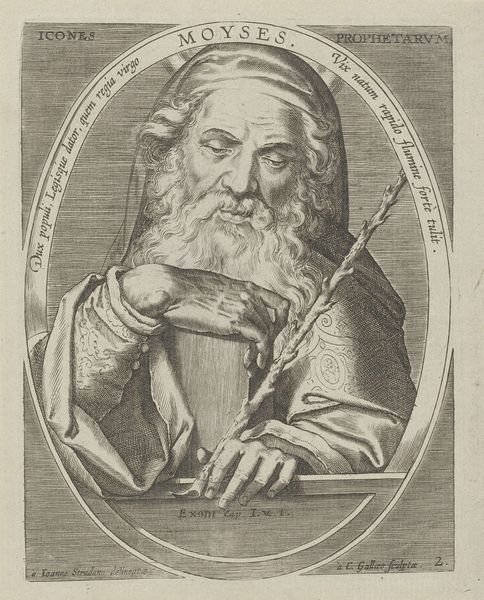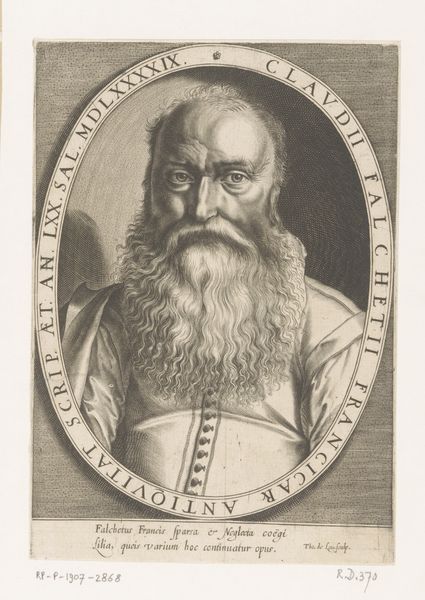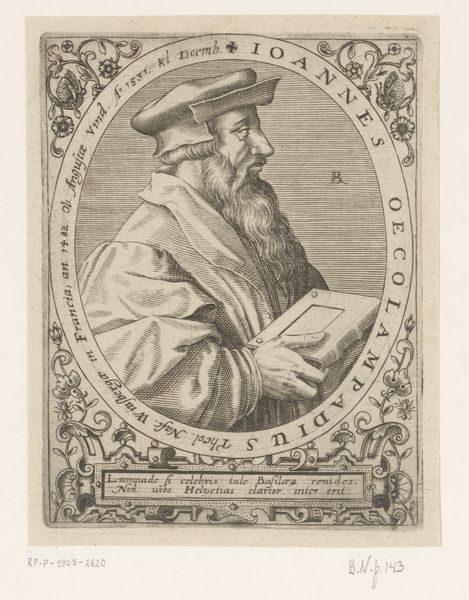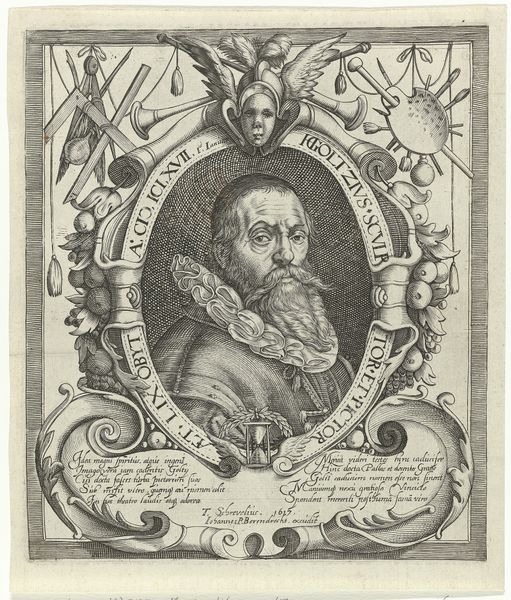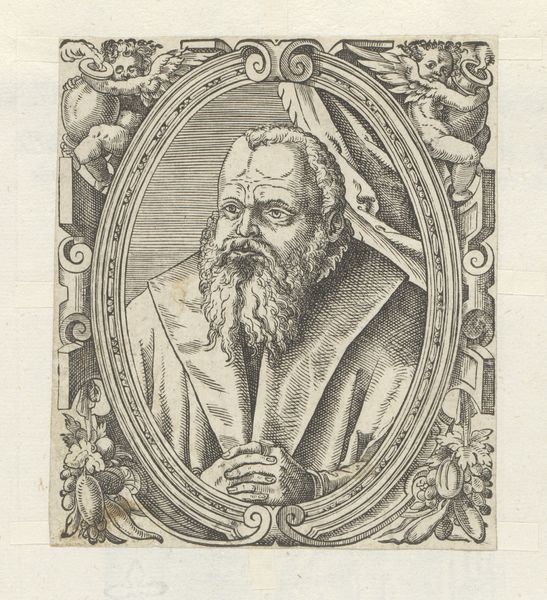
print, engraving
#
portrait
#
pen drawing
# print
#
pen illustration
#
pen sketch
#
old engraving style
#
11_renaissance
#
line
#
northern-renaissance
#
engraving
Dimensions: height 170 mm, width 127 mm
Copyright: Rijks Museum: Open Domain
Curator: Look at the intricate details in Bernhard Jobin's "Portret van Stephan Brechtl," created in 1574. It is rendered with a pen drawing technique and engraving that brings Brechtl to life. What strikes you first? Editor: The texture! The way the lines define the beard, the fur lining of the coat. You can almost feel the roughness of the paper and the precision required to create this image. It makes me wonder about the printing process and the quality of the materials used back then. Curator: Indeed! And consider how portraits like these reinforced societal hierarchies. Notice how he's posed within this decorative oval frame featuring angelic figures in the upper corners and small faces peering out near the bottom, all meant to elevate Brechtl's importance. The inclusion of these figures also invokes themes of heavenly wisdom and immortality, concepts surely connected to the sitter’s identity or profession. Editor: Yes, but who was Stephan Brechtl? Was he wealthy enough to commission this, or was this a gift or tribute? Knowing the social context, the availability and cost of printmaking at the time, would really unlock more layers. I mean, each of those tiny lines, each cherubic face…someone labored meticulously. Curator: Perhaps, but even the presence of what looks like a polyhedral object beside his hand connects him to mathematics, a field esteemed in that era. His holding what seems like a book suggests erudition, contributing to a very deliberate statement. He embodies humanist ideals of the Renaissance. Editor: All made possible through materials and labor. The paper itself, the ink, the tools for engraving - and the system that put them in the artist’s hand to immortalize a specific person. We need to think about who *didn’t* get their portrait made, and why. Curator: An excellent point. These images remind us of how deliberately identities are constructed. Seeing the Renaissance through the lens of image-making reveals the enduring power of symbols. Editor: Absolutely. Analyzing the social framework, materials, and making processes, shows how art actively reflected power relations in society and time. Curator: In conclusion, Jobin’s engraving invites us to consider art’s role in forging legacies. Editor: And remember the people and production lines behind that image and all the others of that time, helping shape those perceptions.
Comments
No comments
Be the first to comment and join the conversation on the ultimate creative platform.
